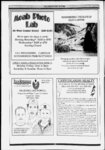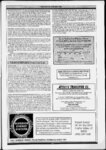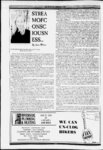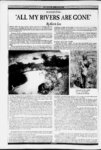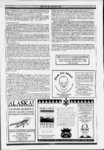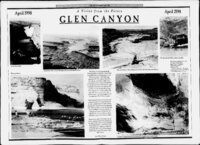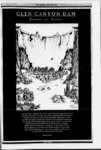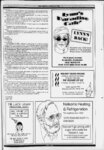| OCR Text |
Show A DECLARATION OF INDEPENDENCE FOR THE COLORADO RIVER By Richard J. Ingebretsen, M.D., Ph. D. know how radiant Glen Canyon was because I saw what was left of it when I was a boy, when the reservoir behind the dam was only partly full. Our Scout troop hiked up the deep narrow canyons that led to Rainbow Bridge. All the way we were accompanied by waterfalls, slides, huge rocks, warm pools. My scoutmaster stopped us at one point and said, "You better remember this now, because next year it will all be underwater." I asked him why they were flooding it. He didn't know. As a young adult I boated over the same canyon, remembering what I had seen, and my heart ached. Year after year, compulsively, I rafted the Colorado through what remained of Cataract Canyon, wondering why a glorious river system was destroyed. By the early 1990s I had read, studied, and absorbed enough that I began to understand the politics that led to the dam. I founded Glen Canyon Institute to pass on what I had learned and, beyond that, to undo a tragic mistake, to begin the process of getting Glen Canyon back. In October of 1996, leading scientists, engineers and Bureau of Reclamation officials gathered at our second annual meeting to discuss the draining of Lake Powell. Their statements made clear that replacing the reservoir with a river, uncovering Glen Canyon, would make water delivery more efficient downstream. I free-flowi- ng 6 President of the Glen Canyon Institute Won't the white "bathtub ring'make a newly exposed Glen Canyon look terrible? Not for long. A biologist who has documented the rise and fall of the lake in the Escalante drainage has demonstrated how quickly the white ring disappears. Our initial studies indicate that in as little as five to ten years we will see very little evidence of this superficial damage. Will draining Lake Powell require the upper Basin states to deliver more economically feasible? water than is Draining Lake Powell, in fact, will free up water. The reservoir now wastes nearly 1,000,000 acre feet per year, which is 8 of the river's flow. Water lost to evaporation is sent out of the basin entirely; most of it winds up in the Midwest in the form of rain. That's a lot of wasted money as well as water. Adding one million acre feet of water into the system would more than offset any additional water requirements made on the Upper Basin states. Furthermore, Upper Basin water saved could be leased or sold to Lower Basin states, generating up to one billion dollars of revenue annually. Lower Basin states could buy water and store it underground, where it wouldn't evaporate and where it would be available in times of drought We could even save the millions of dollars we spend to protect endangered canyons and wildlife GLEN CANYON DAM UNDER CONSTRUCTION IN THE LATE 1950s of water a year8 of the rivers annual flow Draining Lake Powell will free up water. The rber now wastes nearly one million acre feet Richard Iogebrctscn Armed with their data, we announced plans to formulate a scientific and well thought-ou- t plan for eliminating the reservoir. Less than two weeks later, the Board of Directors of the Sierra Club voted to "advocate the draining of the reservoir behind Glen Canyon Dam." Other groups endorsed the idea and the movement gained momentum. At our third, annual meeting we introduced a twenty-minuvideo produced from footage of Glen Canyon taken by David Brower; a means by which we could communicate to people who had little knowledge of Glen Canyon just what had been taken from them. Those opposed to the plan became alarmed and Rep. Jim Hansen even told a friend that he thought efforts to drain the reservoir would be successful within a few decades. He also figured he could bolster his rating in the polls by "saving Lake Powell" As Chairman of the House Resources Committee he convened a hearing whose transparent aim was to discredit our proposal. Of the many people invited to testify, the only one called to testify in favor of the plan was Adam Werbach, President of the Sierra Club. After lengthy protests on our part, we secured an invitation for Dave Wegner, who for twenty years was a biologist with the Bureau of Reclamation and the official in charge of the simulated flood through Grand Canyon downstream from big dams, particularly in Grand Canyon. Draining Lake Powell will conserve water, create revenue, reduce wasteful spending, and stimulate the economy. Hasn't Lake Powell protected the Grand Canyon from floods and increased by water to the river? fresh adding species The very unique and special species of wildlife already in place depend on the annual floods and warm muddy water that the Colorado River provided. By trapping sediments in Reservoir Powell and sending a cold even flow out of the dam, we have driven three species of fish to extinction and endangered five others. Those fish took millions of years to evolve in the runoff conditions of the Colorado, and Glen Canyon water where they could reproduce. The introduced fish are provided trout, which are already very common and which belong in mountain streams. Some of the birds and mammals that prey on them are not endemic to the Colorado canyons, further disrupting the natural system. In the spring of 1996, an attempt was made to repair damage to the Grand Canyon by releasing an artificial flood from the dam, to mimic the high flows of former spring runoffs. After a week of high water, new beaches and backwater habitats were formed, restoring habitat for endangered fish and plants. Less than a year later, the in the spring of 1996. new habitat was gone, eaten away by dear water hungry for sediment. The flood was Hansen's revenge was to schedule Wegner last, after the press and most of a short-tersuccess but a long term failure. Hansen's fellow congressmen had gone home, and to give him little time to make a Wouldn't peaking power be lost if we drained lake Powell? full statement. Such central issues as massive evaporation and damage downstream Most of the peaking power is already gone from the Grand Canyon with the One hostile witness after another was paraded in front of the were never addressed. passage of the Grand Canyon Protection Act of 1992. Losing it all is precisely what we want. The rapid fluctuations panel and the press in the manner of a show trial. Since most of the questions raised up and down caused by peaking power from the dam have caused great environmental at the hearing weren't allowed serious answers, we offer them here. damage. Glen Canyon Dam is part of an electrical grid that receives power from many other sources, cushioning the impact of a surge in demand. Currently, there is a Without the dam, haw do you propose to control the erratic flows of the river through Grand surplus of power on the grid. This fact a with few a g ong energy-savinmeasures in the delivery system and at the consumer Canyon? end would quickly make up for The question's assumption needs examination. We must ask first whether we energy lost at the dam, and greater efficiency would leave us a cleaner world as a dividend. Increased costs want to control the flow, whether it is necessary to control the flow, and beyond that, would be on the order of 65 cents per person per year. These are facts not whether we have the right to control the flow. Animals, plants and fish downstream disputed by power officials. the ask fall of the free and can't a We rise this river. is benefits, the a Considering on small question to flowing muddy depend price pay. The Bureau of Redamatwn states that the reservoir in a vacuum, ignoring the life forms that depend on seasonal fluctuation. won't silt in for another seven hundred JLI11 mamumm 1XTEEN te thirty-five-year-o- ld slow-movi- ng m -- " ii |





